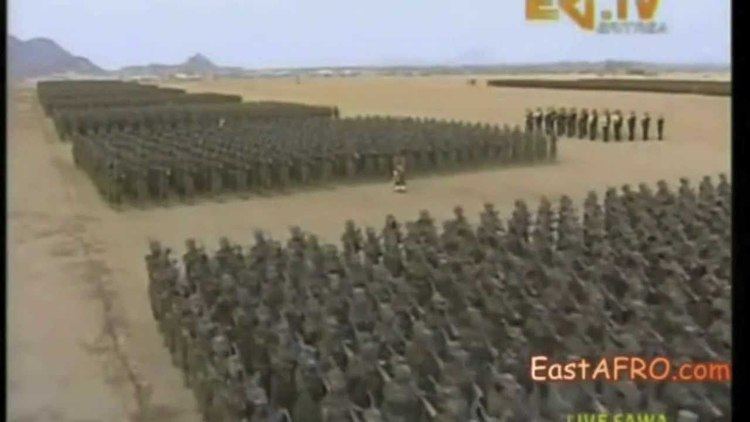Active personnel 320,000 Military age 18 | Conscription 18 Founded 1991 | |
 | ||
Commander-in-Chief President Isaias Afewerki Available formilitary service 1,985,023 males, age 18-40(2004 est.),1,980,987 females, age 18-40(2004 est.) Fit formilitary service 1,599,979 males, age 18-40(2004 est.),1,590,899 females, age 18-40(2004 est.) Similar Djibouti Armed Forces, Ethiopian National Defense, Benin Armed Forces, Zambian Defence Force, Military of Gabon | ||
Edf eritrean defence forces
The Eritrean Defence Forces military role stems from Eritrea's strategic geographical location. It is located on the Red Sea with a foothold on the Straits of Bab al-Mandeb.
Contents
History
Military history in Eritrea stretches back for thousands of years; during ancient times up until the current day, the society of Eritreans has dealt with war and peace. During the kingdom of Medri Bahri, the military fought numerous battles against the invading forces of the Abyssinians to the south and the Ottoman Turks at the Red Sea.
In the 16th century the port of Massawa was used by the Ottomans to protect sea lanes from disruption, while more recently it was used by the Italians during their colonial occupation. The kingdom of Medri Bahri was dissolved and the Colony of Eritrea was founded by the Italians in 1890, shortly after the opening of the Suez Canal. When Italian troops occupied Ethiopia in 1936, Eritrean native soldiers (known as Askaris or Banda, the latter denotes their "betrayal" and service for the enemy) supported the invading force. However, this was reversed by British and Ethiopian troops in 1941. The Eritrean infantry battalions and cavalry squadrons of the "Reale Esercito Coloniale" (Royal Colonial Army) saw extensive service in the various Italian colonial territories between 1888 and 1942.
During the war for Eritrea's independence rebel movements (the ELF and the EPLF) used volunteers. In the final years of the struggle for independence, the EPLF ranks grew to 110,000 volunteers (some 3% of the total population).
Manpower
The Eritrean Defence Forces are among the largest in Africa alongside those of Egypt, Algeria, and Morocco. The size of Eritrea's population is small, particularly when compared to its neighbors. During peacetime the military of Eritrea numbers approximately 45,000 with a reserve force of approximately 250,000.
National service
Every able bodied man and woman is required to serve ostensibly for 18 months. In this time they receive six months of military training and the balance is spent working on national reconstruction projects. This is outlined in both the Constitution of Eritrea and Proclamation 82 issued by the National Assembly on 1995-10-23. However, the period of enlistment may be extended during times of national crisis and the typical period of national service is considerably longer than the minimum. This program allegedly aims to compensate for Eritrea’s lack of capital and to reduce dependence on foreign aid, while welding together an ethnically diverse society, half Christian and half Muslim, representing nine ethnic groups.
Military training is given at the Sawa Defence Training Centre and Kiloma Military Training Centre. Students, both male and female, are required to attend the Sawa Training Centre to complete the final year of their secondary education, which is integrated with their military service. If a student does not attend this period of training, he or she will not be allowed to attend university - many routes to employment also require proof of military training. However, they may be able to attend a vocational training centre, or to find work in the private sector. At the end of the 1½-year national service, a conscript can elect to stay on and become a career military officer. Conscripts who elect otherwise may, in theory, return to their civilian life but will continue to be reservists. In practice, graduates of military service are often chosen for further national service according to their vocation - for example, teachers may be compulsorily seconded for several years to schools in an unfamiliar region of the country. According to the Government of Eritrea, "The sole objective of the National Service program is thus to cultivate capable, hardworking, and alert individuals."
Branches of the EDF
The Eritrean Defence Forces (EDF) are composed of three branches: Air Force, Army, and Navy. The Army is by far the largest, followed by the Air Force and Navy. The Commander-in-Chief of the EDF is the President of Eritrea.
The Minister of Defence oversees the EDF on a day-to-day basis.
